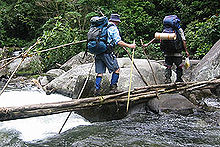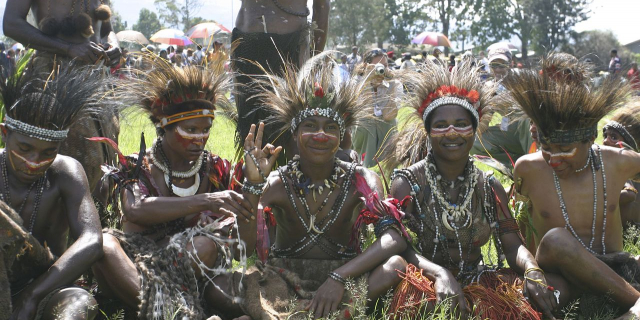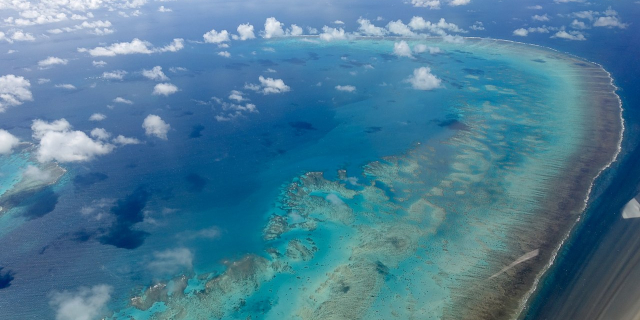The Kokoda Track or Trail is a single-file foot thoroughfare that runs 96 kilometres (60 mi) overland – 60 kilometres (37 mi) in a straight line – through the Owen Stanley Range in Papua New Guinea (PNG). The track was the location of the 1942 World War II battle between Japanese and Allied – primarily Australian – forces in what was then the Australian territory of Papua.
The track runs from Owers' Corner in Central Province, 50 kilometres (31 mi) east of Port Moresby, across rugged and isolated terrain which is only passable on foot, to the village of Kokoda in Oro Province. It reaches a height of 2,490 metres (8,169 ft) as it passes around the peak of Mount Bellamy. The track travels primarily through the land of the Mountain Koiari people.
Hot, humid days with intensely cold nights, torrential rainfall and the risk of endemic tropical diseases such as malaria make it a challenging trek. Hiking the trail normally takes be...Read more
The Kokoda Track or Trail is a single-file foot thoroughfare that runs 96 kilometres (60 mi) overland – 60 kilometres (37 mi) in a straight line – through the Owen Stanley Range in Papua New Guinea (PNG). The track was the location of the 1942 World War II battle between Japanese and Allied – primarily Australian – forces in what was then the Australian territory of Papua.
The track runs from Owers' Corner in Central Province, 50 kilometres (31 mi) east of Port Moresby, across rugged and isolated terrain which is only passable on foot, to the village of Kokoda in Oro Province. It reaches a height of 2,490 metres (8,169 ft) as it passes around the peak of Mount Bellamy. The track travels primarily through the land of the Mountain Koiari people.
Hot, humid days with intensely cold nights, torrential rainfall and the risk of endemic tropical diseases such as malaria make it a challenging trek. Hiking the trail normally takes between four and twelve days; the fastest recorded time is 16 hours 34 minutes.
The track was first used by European miners in the 1890s to access the Yodda Kokoda goldfields. Between July 1942 and November 1942, a series of battles, afterwards called the Kokoda Track campaign, was fought between the Japanese and Australian forces. This action was memorialised in the newsreel documentary Kokoda Front Line!, filmed by cameraman Damien Parer, which won Australia's first Academy Award for its director Ken G. Hall in 1942.
 Crossing Eora Creek on the Kokoda Track
Crossing Eora Creek on the Kokoda TrackAfter the war, the track fell into disuse and disappeared in many places. John Landy, the long-distance runner, set a record of four days for the crossing using carriers and guides during the 1950s. In 1964, Angus Henry, the art teacher at Sogeri High School, with two of his students, John Kadiba and Misty Baloiloi, set a new record which was to stand until after the millennium by completing the journey in three and a quarter days without guides, carriers or any signposts or bridges.
In 2006, the Owen Stanley Ranges and Kokoda Track was included on the Tentative List for World Heritage along with three other sites from PNG.[1] The 1.5 million hectare property is a mixed cultural and natural site covering a significant proportion of the Owen Stanley Ranges and including the Kokoda Track, Managalas Plateau and Mount Victoria and Mount Albert Edward region. The World War II battle sites were a key reason for cultural listing along with the unique cultures of the Koiari peoples. The Owen Stanley Ranges, through which the Kokoda Track passes, is one of the most biologically important areas in the Asia Pacific with over 4000 plant species and many endemic bird and animal species.
The Kokoda Track Foundation, established in 2003, helps villages along the track with education and healthcare. There is a proposal to turn the track into an Australian heritage destination on a par with ANZAC Cove at Gallipoli.[2] Creation of the heritage area, is in part a response to the issue of an Australian gold mining company wanting to mine on or near the track. As of 2007[update], the idea was backed by the Australian government and Papua New Guinea's foreign minister.[2]
In November 2007, Australian mining firm Frontier Resources announced plans to divert a section of the track to make way for a copper mine.[3] The plan has the support of the local landowners and the Papua New Guinean government but has been criticised by trekking operators.[3]
The track has been closed numerous times by villagers along the route in response to various grievances. In May 2009, villagers at Kovelo – near Kokoda village – blocked the track after complaints that money collected from trekking fees was not being distributed fairly.[4]
Popularity and deaths Number of walkers[5] Year Walkers 2001 76 2002 365 2003 1074 2004 1584 2005 2374 2006 3747 2007 5146 2008 5600 2009 4366 2010 2871 2011 2914 2012 3597 2013 3246 2014 3167 2015 3167 View from plane flying over the Owen Stanley Range from Kokoda back to Port Moresby
View from plane flying over the Owen Stanley Range from Kokoda back to Port MoresbySince 2001, there has been a rapid increase in the number of people walking the track (see table at right). Six Australian trekkers have died from hyponatremia while attempting to walk the track. Four of those deaths occurred in 2009, with two in the same week in April and another two 8 days apart in September and October.[5][6][7][8] The deaths have sparked calls for mandatory fitness tests for all walkers before starting.[9]
As the trail's popularity increased, there were calls for more regulation of trek operators, with some operators taking as many as 150 walkers in a group.[7][10] In response, the Kokoda Track Authority announced that from the beginning of 2010, tour operators would require a commercial licence.[citation needed]
In August 2009, a group of trekkers were killed when their light plane, Airlines PNG Flight 4684, crashed en route to Kokoda Station.[11] All 13 people on board, including 9 Australian trekkers, were killed in the crash.[11] As a result, the Australian Government committed $1.8 million to improve the safety of airstrips at Kokoda, Menari, Kagi, Melei, Efogi, and Naduri, villages located along the track. A second radio channel was also installed to deal with emergencies and maintenance work.[12]
In October 2009, Don Vale became the oldest Australian (at 83) to successfully complete the Kokoda Track.[13]
In November 2009, Australian paralympian Kurt Fearnley (born without the lower section of his spine[14]) completed the track, crawling north to south, in 11 days. A multiple paralympic gold medalist (T54 Marathon in Athens and Beijing), he used customized shin pads and wrist guards. His journey was to raise awareness of men's health issues and was inspired by the story of Corporal John Metson, who crawled the track for three weeks, refusing the assistance of a stretcher on the grounds it would burden his comrades.[15][16]









Add new comment